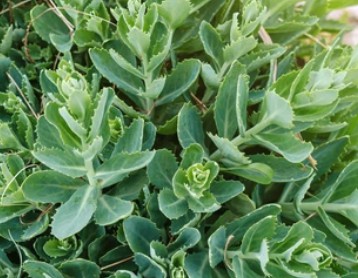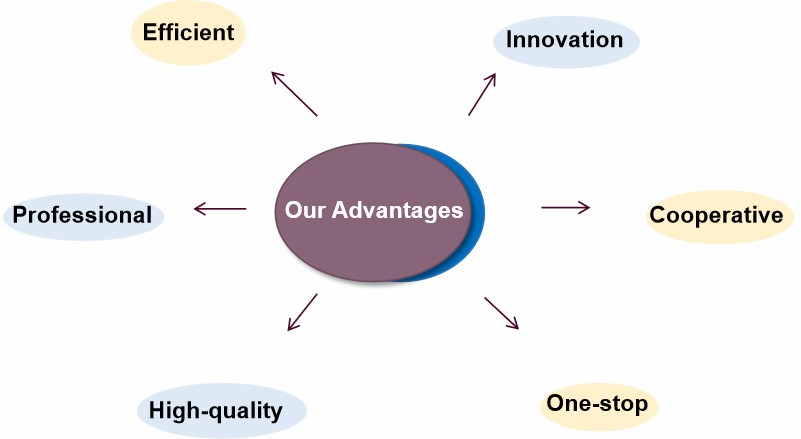Sedum, which occurs in most of the northern hemisphere, including the arid regions of Africa and Latin America in the southern hemisphere, is a succulent perennial herb or subshrub that is short and consumes little water and fertilizer, making it a popular rooftop greening plant. The plants vary in form from tufted or mossy to tall, erect herbs with woody bases. Additionally, Sedum is highly adaptable and drought tolerant and can grow in a wide range of soil conditions, making it a common choice for urban greening and home potting.
Lifeasible is committed to providing perfect plant genetic transformation services. We have established an ideal plant genetic breeding transformation platform after years of research efforts, aiming to provide reliable Sedum genetic transformation research services and to promote the connotation of Sedum plant research journalists. In Sedum genetic transformation research, we use genetic engineering technology to introduce exogenous genes into plant cells so that they can be stably integrated into the target plant genome, thus improving and optimizing plant traits.

What do we offer?
We utilize several transformation methods to introduce exogenous genes into Sedum plants. These methods include Agrobacterium-mediated transformation, projectile/gene gun methods, and protoplast transformation.
- Agrobacterium-mediated transformation. This widely used method relies on the natural ability of Agrobacterium tumefaciens to transfer a specific DNA segment, known as T-DNA, into the host plant genome. T-DNA contains the genes of interest, which can be stably integrated into the plant's genome and expressed. Agrobacterium-mediated transformation has proven successful in Sedum, enabling the introduction of various genes associated with traits such as herbicide resistance, disease resistance, and flower color modification.
- Gene gun method. This method employs microscopic particles coated with foreign DNA, which are propelled into plant cells using a gene gun. The particles penetrate the cell wall and nuclear membrane, allowing the foreign DNA to integrate into the plant genome. The biolistic method has been successfully applied in Sedum, enabling the transformation of species that may be recalcitrant to Agrobacterium-mediated techniques.
- Protoplast transformation. Protoplasts, isolated plant cells devoid of cell walls, can be transformed by introducing foreign DNA directly into the cell through various techniques such as electroporation or polyethylene glycol (PEG)-mediated uptake. Protoplast transformation has been utilized in Sedum to introduce genes related to traits like drought tolerance and improved flowering.
Our process of genetic transformation
- Stem segments of Sedum were taken, and clusters of shoots were induced to form to obtain meristematic tissue blocks.
- The meristematic tissue blocks were co-cultured with recombinant Agrobacterium, which is obtained by introducing a plasmid with the target DNA molecule into the starting Agrobacterium.
- The obtained meristematic tissue blocks were then subjected to induction of germination.
- The germinated meristematic tissue blocks were taken, and rooting was induced.
- The transgenic plants obtained were positively identified.
Our research objectives
- Improvement of agronomic traits. Genetic transformation offers a means to enhance critical agronomic traits in Sedum, such as yield, growth rate, and nutrient utilization. Through the introduction of genes associated with these traits, researchers aim to develop transgenic Sedum lines with improved agricultural performance.
- Stress tolerance. Sedum species exhibit varying degrees of tolerance to environmental stress, including drought, salinity, and extreme temperatures. Genetic transformation research aims to identify and introduce stress-responsive genes into Sedum, enhancing its ability to withstand adverse conditions and expand its cultivation range.
- Secondary metabolite production. Sedum plants can produce numerous bioactive secondary metabolites, which have potential applications in medicine, cosmetics, and other industries. Genetic transformation can be employed to increase the production of these valuable compounds or introduce pathways for synthesizing novel metabolites, thereby enhancing the commercial potential of Sedum species.
Notice to customers
- The exact cost of the experiment is related to a variety of factors, so please refer to direct inquiries for specific costs.
- We can carry out Sedum genetic transformation throughout the year, and customers need to negotiate technical solutions and costs for individual transformation.
Why Choose Us?

Lifeasible is dedicated to the genetic transformation of Sedum. We have paved the way for innovative applications of Sedum, including enhancement of agronomic traits, improvement of stress tolerance, and production of valuable secondary metabolites, significantly advancing the progress of Sedum's genetic transformation research and providing new avenues for manipulating its genetic composition and improving its desirable traits. If you are interested, please feel free to contact us.
For research or industrial raw materials, not for personal medical use!

